Dream Machine 2015
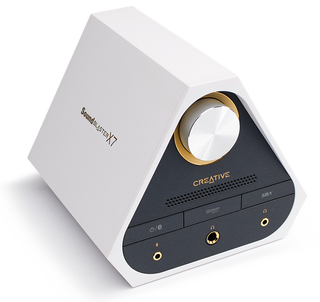
Sound Card: Creative Sound Blaster X7 Limited Edition
Sound control to Major Tom
On any mission, making sure you can hear what’s going on, loudly and clearly, is essential. This triangular block with Battlestar-Galactica-like corners fits the bill and offers lots of options. This external sound card features a maximum output of 100W (50W + 50W) and headphone amp impedance of 1 ohm. Despite the X7’s impressive power output, we went with powered speakers. There’s also a built-in mic, so you don’t need a gaming headset to talk to Houston.
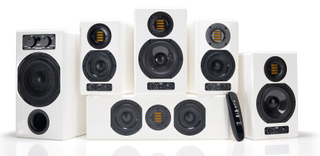
Speakers: Adam Audio ARTist Series 5.1 Speaker System
Pardon our noise; it’s the sound of awesome
Nothing blows your hair back like the divine roar of rocket engines during a launch, or the soaring vocals of Diva Plavalaguna. We got four supersonic models for our mission from Adam Audio. The big boys in the set—the ARTist 5’s—have a range of 50Hz to 50KHz. The ARTist Sub fills in the bass, reaching from 150Hz down to 32Hz to let you feel the earth rumble as the main engines ignite. We used ARTist 3s as satellites and an ARTist 6H for the center, with ranges of 60Hz to 50KHz and 55Hz to 50KHz, respectively. The speakers all feature carbon fiber cones, Kevlar tweeters, more inputs than you can shake a space pen at, and individual crossover controls. If our rockets don’t blow you away, these speakers will.
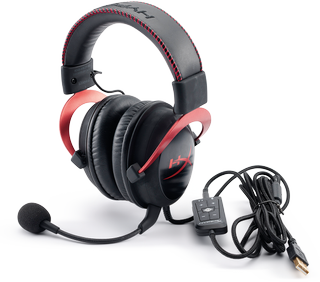
Headset: Kingston HyperX Cloud II
Beaming your ears to cloud nine
Considering we gave Kingston’s HyperX Cloud II a 9 Kick Ass back in June, we didn’t have to look far for a headset that would allow us to play our favorite Nep-tunes. This headset has aluminum construction with a stitched vinyl-covered memory foam headband, and detachable mic. It also comes with both vinyl- and fabric-covered ear cups, making them comfy enough for crew and mission controllers to wear for hours on end. They offer fantastic sound isolation, so you can focus on the mission at hand. When you’re not in space, these cans also make good street headphones if you disconnect the mic and 3.5mm jack from the USB connector. Virtual 7.1 mode kept us ducking in our dogfights, and had us spacewalking when we made a stereo connection to the mothership.
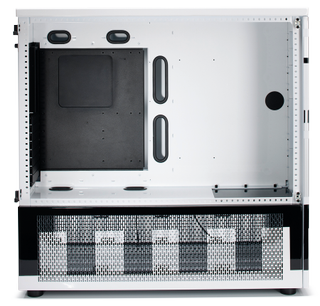
Case: Magnum SMA8
A hull lot of love
PC Gamer Newsletter
Sign up to get the best content of the week, and great gaming deals, as picked by the editors.
All the most expensive plutonium and premium liquid-fueled rockets mean nothing to a space ship if it doesn’t have a premium-grade hull to protect it. A cheap chassis may suffer from hull degradation upon lift off, or... you know, when you bang it against a table. That’s why we went to the brilliant engineers at CaseLabs. Interesting bit of trivia, CaseLabs founder Robert Keating was a chief weld engineer and helped create and develop rockets for NASA in the ’60s. He actually played an integral part in the Apollo missions, including Apollo 11, which famously took us to the moon. So, when it came time to choose a chassis for our Dream Machine, we went with the obvious choice. It doesn’t take a rocket scientist to know that rocket scientists do good work. While CaseLabs still does sheet metal fabrication for a variety of jobs, it has evolved with the personal computing era and, as a result, is known today for its extremely modular and premium PC chassis. With the company’s cosmically large Magnum SMA8 case, which measures 11.2x26x25.7 inches, we had enough room and flexibility to build the rocket of our dreams.
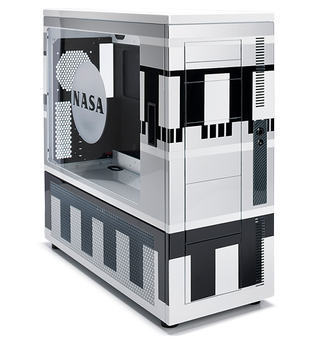
We could fit in four full-sized GPUs, custom liquid cooling, two massive radiators, and eight storage drives with ease. The all-aluminum construction also has sturdy blast shields, but the hull is also light enough so that our rocket can easily make lift off. Finally, not only can we open up the pod bay doors without the help of HAL 9000, but the side doors can easily come straight off the case, which is great for routine maintenance checks. Arguably, the real supergiant star of the show is the amazing paintjob by Smooth Creations. We’ve used the company before to decorate our Dream Machines, but the paintjob this time is smoother than the Milky Way. It’s black, white, and silver pattern perfectly encapsulates the look of the Titan II GLV and it has a super killer, pristine finish. The NASA etching on the window is also out of this world.
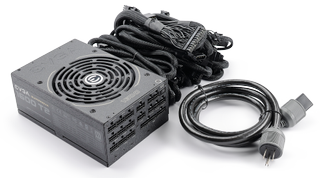
PSU: EVGA SuperNOVA 1600 T2
Rocket power
Ensuring that our rocket has enough power to go supernova is EVGA’s aptly named SuperNOVA power supply. It’s a 1,600-watt modular PSU that is composed of 100 percent high-quality grade Japanese Nippon Chemi-con solid state capacitors, which ensure this rocket will have ample power and be able to withstand the harshest conditions. We needed all the energy we could muster, too, and pushed our system to over 1,500 watts! Talk about a lifesaver! In keeping with the Titan theme, the SuperNOVA PSU also carries an 80 PLUS Titanium power efficiency rating, which is the highest standard there is. Because Platinum-rated PSUs are for the Soviets.
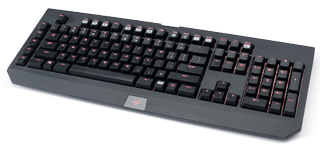
Keyboard: Razer BlackWidow Chroma
Mission Control gets fabulous
When you’re entering commands before, during, and after launch, you want to make sure that they’re quick and accurate whether you’re in a capsule in Cape Canaveral or sitting behind a console in Houston. For this, we turned to Razer and the BlackWidow Chroma keyboard. Besides just having lots of shiny customizable lights to signal aliens with, this keyboard has a simple and uncluttered layout. There’s no elaborate specialized function keys, and only five macro keys that sit to the left of the main key bank. The keys themselves feature Razer’s green switches, which have slightly less actuation distance–1.9mm as opposed to a more typical 2.2mm. That may not matter much, but when you need faster response, that little bit of distance can mean the difference between burning up or bouncing off the atmosphere like a rock skipping across a pond.

Mouse: Logitech G303 Daedalus Apex
Orbital control in the palm of your hand
This spacey mouse is simple, as gaming mice go, and we think that’s a good thing. You won’t find crazy button layouts here. This lightweight, compact mouse has a simple and accessible layout, perfect for crewmembers who need precise response without complexity. Visually, the G303 keeps it elegant and simple, with RGB lighting that is projected through gratings on either side of the mouse, producing ovals on your desk. The mouse sports up to 12,000dpi for players who prefer twitchy movements of the hand and wrist. Finally, the G303’s design makes it usable (even if not ideal) for lefties. The two thumb buttons are accessible with the ring finger, and there’s no thumb molding to make the mouse awkward.
Click the next page for a brief NASA history lesson and the conclusion.
Most Popular





